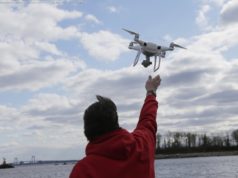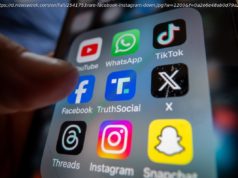From maximum pressure to maximum engagement
On Tuesday, Donald Trump, who once threatened North Korea with “fire and fury” and tweeted at his secretary of state to quit “wasting his time trying to negotiate with Little Rocket Man,” gave North and South Korea his “blessing” discuss a possible peace treaty and boasted that the United States and North Korea were talking “at very high levels.” Hours later, we found out how high: The Washington Post reported that CIA Director Mike Pompeo, who once spoke ominously of “separating” the Kim regime from its nuclear weapons, had secretly traveled to North Korea to meet with Kim Jong Un ahead of Trump’s planned summit with Kim later this spring.
The developments underscored just how abruptly the Trump administration has pivoted from a policy focused mainly on applying “maximum pressure” on North Korea to one of pursuing maximum engagement. But they also showed how, when it comes to negotiations over the North Korean nuclear program, Trump seems to want to go big or go home. “There’s a great chance to solve a world problem” that “should have been taken care of years ago, decades ago” but now “must be taken care of one way or the other,” the president said on Tuesday, while meeting with Japanese Prime Minister Shinzo Abe at Mar-a-Lago. “We’ll either have a very good meeting or we won’t have a good meeting. And maybe we won’t even have a meeting at all depending on what’s going in.”
When Trump in March accepted Kim’s invitation to meet, Victor Cha, the Korea expert and onetime candidate to be Trump’s ambassador to South Korea, predicted that the talks could take two forms. The more modest option would involve the United States incrementally lifting sanctions against North Korea and offering it energy and economic assistance. In exchange, the North would have to freeze the development of, and eventually dismantle, its nuclear weapons and long-range missiles, which directly threaten the U. S. homeland. Such a deal would not necessarily place restrictions on North Korea’s shorter-range missiles, which can target Japan and South Korea.
The bolder option, which Cha suspected would appeal to Trump, would be to dispense with the step-by-step, confidence-building approach of past negotiations and instead “put much bigger carrots on the table, including diplomatic normalization of relations and even the conclusion of a peace treaty ending the Korean War” in return for North Korea fully giving up its nuclear program. (Though the Korean War stopped in an armistice in 1953, it was never formally ended and is technically still ongoing.)
During his Senate confirmation hearing for secretary of state last week, Pompeo nodded to both options. He said the administration’s objectives in the Trump-Kim summit would be limited to addressing the North Korean nuclear threat to the United States, noting that the two leaders would seek to establish conditions for an agreement in which North Korea “will step away from its efforts to hold America at risk with nuclear weapons, completely and verifiably.” Yet he also stated that the administration would not provide “rewards” to North Korea until the U. S. achieved its desired outcome from the talks “permanently” and “irreversibly.”
Trump himself, meanwhile, has shown little interest in small-bore measures. Before the current flurry of diplomacy, he went much further than his predecessors in sanctioning and threatening military action against North Korea. And while he’s not the first American president to send a Cabinet official to meet with North Korea’s leader and dangle a peace treaty and presidential summit before the North Koreans—Bill Clinton did all of these things in the 1990s, in an effort to eliminate the then-rudimentary North Korean nuclear program—Trump is unique in making these splashy moves so early in negotiations, before North Korea has committed to corresponding concessions.
Trump “has thrown out some of the standard diplomatic playbook” on North Korea, said Bruce Klingner, a Korea expert at the Heritage Foundation. He recalled how in 2000, when he was working at the CIA, there was a debate within the Clinton administration about how to respond to a similar North Korean invitation for a presidential summit. Some officials “thought the force of Bill’s personality was so strong that if we get him in the same room as Kim Jong Il we’ll get everything we want,” Klingner told me. “But the majority view was ‘No. We don’t deploy a president to negotiate. We don’t deploy a president for a photo-op. We only send a president to sign something where we know where every piece of punctuation is going to be on that paper.’” Missile talks with North Korea, which peaked with a meeting between Secretary of State Madeleine Albright and Kim Jong Il, ultimately stalled, and Clinton never visited Pyongyang.
Trump has rejected this traditional bottom-up process in favor of a more top-down approach. As a senior administration official explained to reporters when the Trump-Kim summit was first announced, “it made sense to accept an invitation to meet with the one person [in North Korea] who can actually make decisions instead of repeating the long slog of the past.”
And while it’s alluring to discard a playbook that for 25 years has failed to produce a denuclearized North Korea, Klingner cautioned that there’s a solid rationale for some of the plays. Trump has characterized a peace treaty on the Korean peninsula as something of a revelation; “people don’t realize the Korean War has not ended,” he remarked on Tuesday, in response to reports that North and South Korean officials were planning to discuss easing or formally ending hostilities during a summit next week. But U. S. officials have long placed such an agreement at the conclusion of “an arduous negotiation” because of the complications surrounding it.
Since a peace treaty would replace the 1953 armistice that was signed by China, North Korea, and the U. S.-led United Nations Command, Klingner noted, it “would need to be formalized by the UN—if not the Security Council, at least the UN General Assembly” and ratified by North Korea, China, the United States, and most likely South Korea even though it isn’t a signatory to the armistice.
Klingner added that “it would be a huge mistake to sign a peace treaty without first addressing the nuclear, missile, conventional, chemical, and biological [military] threat that North Korea poses to the South.” North Korea has long wanted to “divide the [U.






